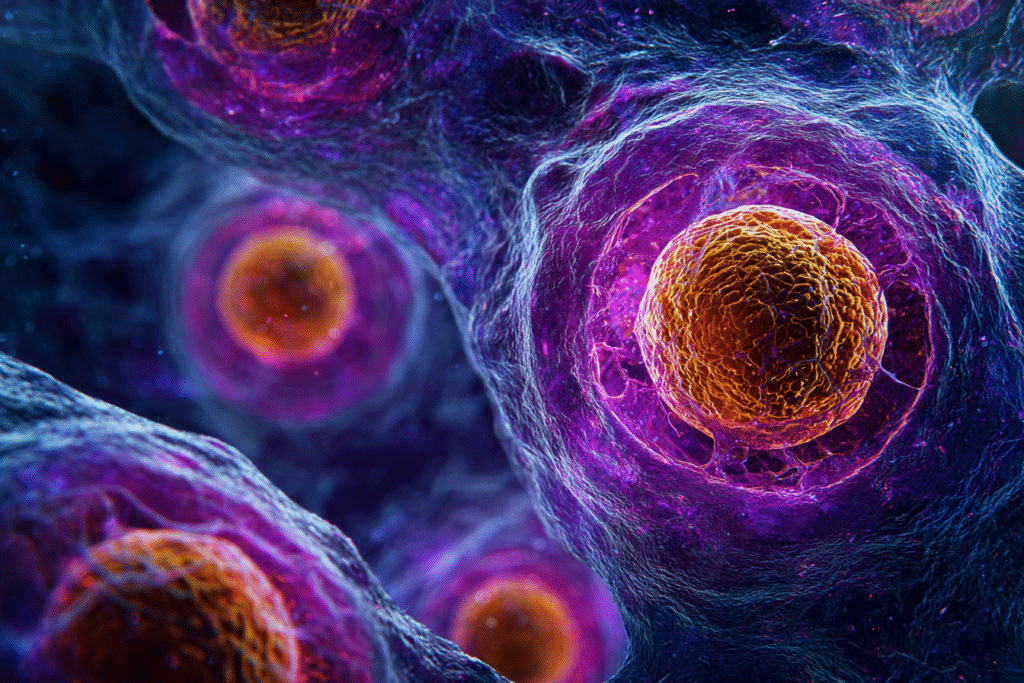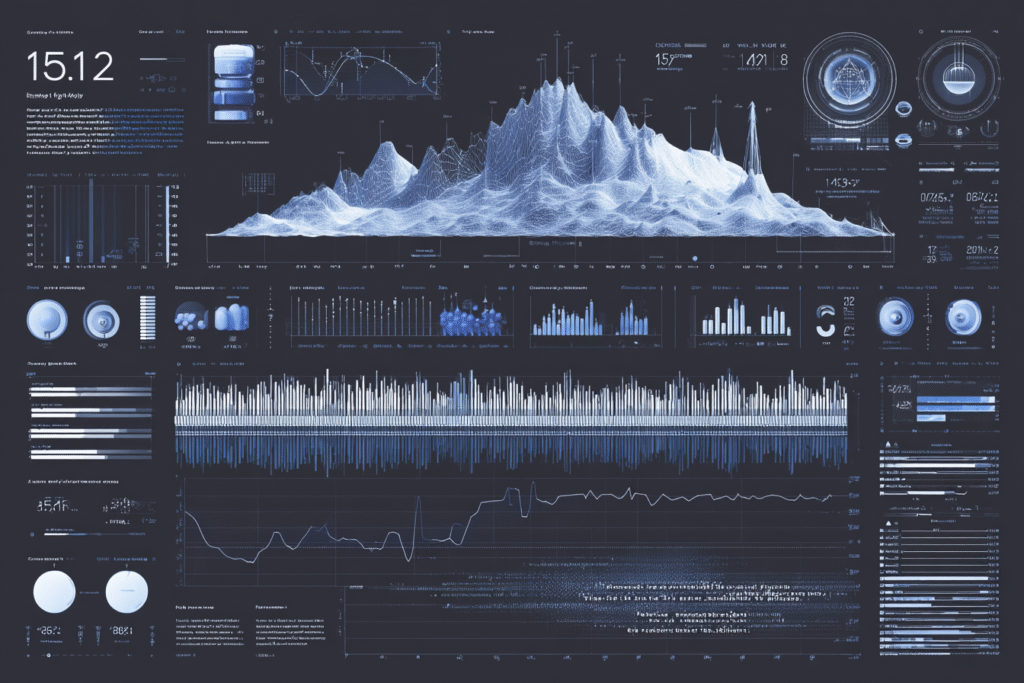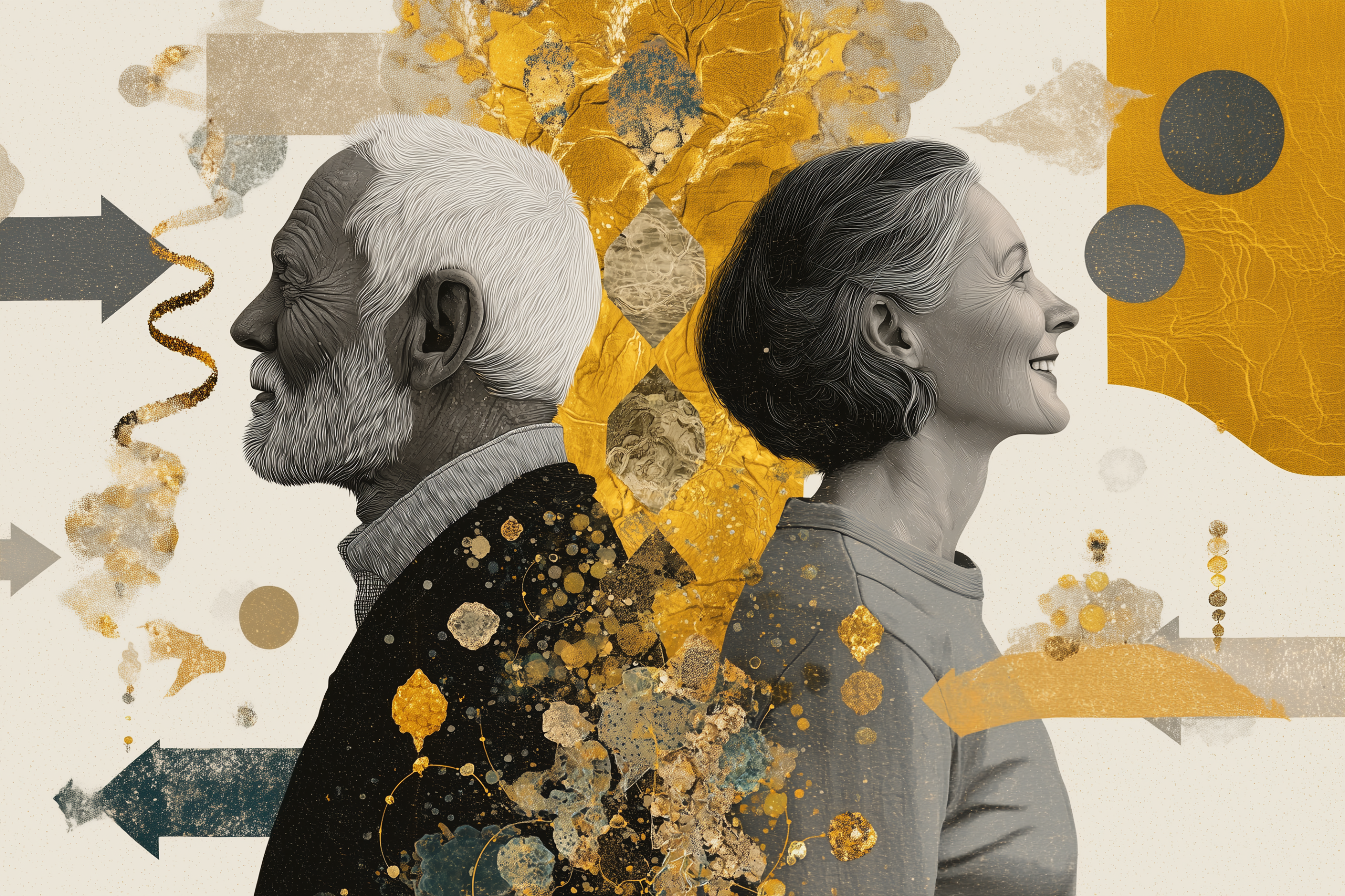What if the first person to live to 150 has already been born, and it might be you?
Note: This article is for educational and informational purposes only. See full disclaimer at the end.
This isn’t science fiction anymore. While our ancestors searched for fountains of youth in distant lands, today’s longevity revolution is happening in laboratories, clinics, and surprisingly, in the daily routines of people who’ve decided that aging isn’t as inevitable as we once believed. The convergence of cellular biology, artificial intelligence, and a new understanding of aging as a treatable condition rather than an unavoidable fate has created an unprecedented moment in human history.
But here’s what makes this revolution different from every anti-aging promise that came before: it’s not about magic pills or mystical practices. It’s about understanding aging as an information problem—a breakdown in the cellular communication systems that maintain our bodies—and systematically addressing it with evidence-based interventions that are available today [1].

The New Science of Biological Age
The most profound shift in longevity science isn’t about living longer—it’s about recognizing that chronological age and biological age are two entirely different measurements. Your driver’s license might say you’re 50, but your cells might be functioning like those of a 35-year-old, or conversely, a 65-year-old. This distinction has transformed how we think about aging from a fixed timeline to a malleable process.
Northwestern University’s Human Longevity Laboratory has become ground zero for this revolution [6]. They’re not just measuring how old people are; they’re measuring how fast they’re aging—and more importantly, how to slow that rate down. Using DNA methylation patterns, researchers can now predict not just lifespan but healthspan with remarkable accuracy. These methylation patterns—essentially chemical modifications to our DNA that accumulate over time—act like a biological clock that can be wound backward.
The implications are staggering. In studies published in 2024, researchers identified two distinct waves of accelerated aging that occur around ages 44 and 60 [2]. These aren’t gradual declines but sudden shifts in biological function, suggesting that aging happens in punctuated bursts rather than steady deterioration. Understanding these inflection points opens entirely new windows for intervention.
The Cellular Reprogramming Revolution
Perhaps no discovery has electrified the longevity field more than cellular reprogramming—the ability to reset cells to a younger state without losing their identity. Using a combination of proteins called Yamanaka factors, scientists can now take a skin cell from a centenarian and transform it back into a cell that functions like it did decades earlier.
The Salk Institute’s 2016 experiment with progeria mice—animals bred to age rapidly—demonstrated something that seemed impossible: partial reprogramming could extend lifespan by 30% while improving health markers across every measured system. By 2024, this technology had advanced to the point where Life Biosciences was preparing to file for the first human trials of a reprogramming therapy [10].
But reprogramming isn’t without risks. The same mechanisms that make cells young again can also make them cancerous. It’s like trying to rewind a cassette tape while it’s still playing—push too hard, and the whole thing unravels. The solution lies in what researchers call “partial reprogramming”—resetting cells just enough to restore function without erasing their identity.
What makes this particularly exciting is that we’re not waiting for some distant future. Researchers at Stanford have already shown that reprogramming specific organs in old mice can restore brain function, while teams at Harvard are demonstrating that the process can reverse blindness caused by aging. The question is no longer whether we can reprogram human cells—we can. The question is how to do it safely and systematically.

The NAD+ Renaissance
While cellular reprogramming represents the cutting edge, the restoration of NAD+ levels offers something more immediate and accessible. NAD+ (nicotinamide adenine dinucleotide) is the cellular fuel that powers hundreds of critical processes, from DNA repair to energy production. By middle age, our NAD+ levels have plummeted to half their youthful peaks, contributing to everything from fatigue to cognitive decline [5].
Harvard’s David Sinclair, who’s been called both a visionary and controversial figure in longevity research, has spent two decades investigating how boosting NAD+ can reverse aspects of aging. His daily regimen of 1 gram of NMN (nicotinamide mononucleotide), a precursor to NAD+, has become something of a template for longevity enthusiasts worldwide. At nearly 60, Sinclair reports blood markers closer to those of a 31-year-old.
The science backs up at least some of the enthusiasm. Clinical trials have shown that NMN supplementation improves insulin sensitivity, enhances physical performance, increases muscle strength, and even improves sleep quality in older adults [4]. A 2024 study found that participants taking NMN showed improvements in walking speed and grip strength—two key predictors of healthy aging.
But NMN is just one piece of the NAD+ puzzle. Researchers have identified multiple ways to boost these critical levels: inhibiting CD38 (an enzyme that degrades NAD+), activating sirtuins (proteins that depend on NAD+ to function), and even using compounds like resveratrol that act as accelerator pedals for these longevity pathways. The key insight is that aging isn’t just about losing NAD+—it’s about the entire system that produces, uses, and recycles this vital molecule breaking down.
The Blueprint Revolution
Perhaps no one embodies the extreme end of the longevity revolution more than Bryan Johnson, the tech entrepreneur who’s spending $2 million annually to become what he calls “the most measured man in history.” His Blueprint Protocol [11] isn’t just a health regimen—it’s an attempt to remove human decision-making from the equation entirely, creating an algorithm for optimal aging.
Johnson’s approach is exhaustive: 111 supplements daily, eating his last meal at 11 AM, exercising for 90 minutes every morning, and undergoing monthly MRIs, daily blood tests, and continuous monitoring of virtually every biomarker science can measure. His team of 30 doctors and researchers analyzes this data to continuously optimize his protocol. The results? Johnson claims to have slowed his rate of aging to 0.69—meaning that for every 12 months that pass, his body ages only 8 months.
The Blueprint Protocol has become publicly available (minus the medical team and million-dollar price tag), with thousands worldwide following modified versions. The basic protocol costs between $1,000-1,500 monthly and includes specific foods (his famous “Green Giant” smoothie and “Nutty Pudding”), targeted supplements, and precise exercise routines. But Johnson himself admits that the majority of benefits come from basics that cost little to nothing: prioritizing sleep, regular exercise, and avoiding harmful behaviors.
What makes Blueprint revolutionary isn’t necessarily its complexity but its philosophy: treating the body as a system that can be optimized through data and removing the cognitive burden of daily health decisions. It’s longevity as engineering project rather than lifestyle choice.

The Extreme Frontier
Beyond supplements and protocols, the longevity revolution’s bleeding edge involves interventions that sound more like science fiction than medicine. Gene therapy, once confined to treating rare diseases, is now being deployed against aging itself. In 2023, Johnson received his first gene therapy injection—Follistatin, designed to maintain muscle mass and strength with age. By 2024, multiple companies were developing gene therapies targeting everything from gray hair to cellular senescence.
The Klotho protein has emerged as particularly promising. Researchers at the Universitat Autònoma de Barcelona demonstrated that boosting Klotho levels in mice extended lifespan by 15-20% while improving muscle strength, bone density, and cognitive function [3]. The treatment stimulated new neuron formation and enhanced immune activity in the hippocampus—essentially making old brains young again. Human trials are now being planned.
Even more radical are experiments with young blood transfusions and stem cell therapies. Johnson made headlines with his “Project Baby Face” involving blood plasma exchanges with his teenage son (which he later discontinued). While ethically complex, research on parabiosis—connecting the circulatory systems of young and old animals—has shown remarkable rejuvenation effects. The challenge is translating these findings into treatments that don’t require a younger donor.
Swedish bone marrow-derived mesenchymal stem cells are being injected into joints, organs, and even systemically to restore tissue function. Early results suggest improvements in everything from arthritis to organ function, though long-term safety data is still being collected. The field is moving so fast that by the time safety studies are complete, the next generation of treatments has already emerged.
The Democratization Challenge
Here’s the uncomfortable truth about the longevity revolution: it’s currently a luxury good. While Johnson’s $2 million annual budget is extreme, even basic longevity interventions can cost thousands monthly. High-quality NMN runs $100-300 per month. Comprehensive biomarker testing can cost $5,000 annually. Advanced treatments like stem cell therapy or gene therapy can reach six figures.
This creates what researchers call the “longevity divide”—a future where the wealthy might live decades longer than the poor, not through better healthcare but through access to age-reversing technologies. It’s a scenario that keeps ethicists awake at night and has prompted calls for longevity interventions to be considered basic healthcare [7].
Yet there’s reason for optimism. The history of technology shows that what begins as luxury becomes necessity, then commodity. The first cell phones cost $4,000; now they’re essentially free with service plans. The same pattern is emerging in longevity science. NMN, which cost $1,000 per gram five years ago, now costs $50. Gene sequencing, once a billion-dollar project, now costs less than $100.
More importantly, the most powerful longevity interventions remain free or nearly free. The Stanford aging study found that the behaviors with the strongest impact on biological age were sleep quality, exercise consistency, and stress management—not expensive supplements or treatments [2]. The blue zones, regions where people routinely live past 100, achieve extraordinary longevity through diet, community, and lifestyle rather than medical intervention.

The Practical Revolution
So what does the longevity revolution mean for someone who isn’t a millionaire biohacker or research scientist? More than you might think. The convergence of research has identified clear, actionable strategies that can significantly impact how we age:
The foundation remains metabolic health. The single strongest predictor of healthy aging isn’t genetics or supplements—it’s insulin sensitivity. Maintaining healthy blood sugar levels through diet and exercise has more impact on longevity than any pill currently available. Time-restricted eating, where you compress your eating window to 8-10 hours daily, has shown remarkable effects on metabolic health and cellular repair processes.
Sleep optimization has emerged as perhaps the most undervalued longevity intervention. Poor sleep accelerates aging at the cellular level, disrupting everything from hormone production to DNA repair. The longevity leaders prioritize sleep with religious fervor—Johnson famously goes to bed at 8:30 PM every night, using temperature-controlled mattresses, blackout curtains, and sophisticated monitoring to ensure optimal recovery.
Exercise, particularly strength training, has proven to be a powerful anti-aging intervention. Muscle mass is one of the strongest predictors of healthy aging, and resistance training has been shown to reverse many age-related changes at the cellular level. The protocol doesn’t need to be complex—progressive overload with basic movements, performed consistently, can maintain strength and function decades longer than previously thought possible.
The supplement stack that emerges from the research is surprisingly modest: Vitamin D3 (most people are deficient), magnesium (critical for hundreds of cellular processes), omega-3 fatty acids (for inflammation control), and potentially NAD+ precursors like NMN or NR for those over 40. Everything else, despite the hype, has mixed evidence at best.
The Next Horizon
The XPRIZE Healthspan competition, offering $101 million in prizes for teams that can extend healthy lifespan, has attracted 554 teams from 55 countries [12]. Their approaches range from AI-driven drug discovery to novel gene therapies to radical lifestyle interventions. The competition’s structure—requiring proven results in human trials within seven years—means that whatever wins will be available to the public by decade’s end.
Artificial intelligence is accelerating discovery at an unprecedented pace. AI systems are now identifying potential longevity compounds in days rather than decades, predicting drug interactions, and personalizing interventions based on individual genetic and metabolic profiles [9]. The convergence of big data and longevity science means that your smartphone may soon be able to predict and prevent age-related diseases years before symptoms appear.
The most exciting development may be the shift in how we measure success. The field is moving from lifespan (how long you live) to healthspan (how long you live in good health) to what some researchers call “youthspan”—maintaining not just health but vitality, energy, and capability throughout life [8]. It’s not about adding years to the end of life but adding life to all your years.

The Revolution Is Now
The longevity revolution isn’t coming—it’s here. While we may not have found the fountain of youth, we’ve discovered something better: the ability to measure, understand, and systematically address the processes that drive aging. The interventions available today, from simple lifestyle modifications to cutting-edge therapies, offer the potential to not just extend life but to maintain vitality and health far longer than any generation before us.
The question isn’t whether these interventions work—the science is increasingly clear that they do. The question is whether we’ll act on this knowledge or wait for some future breakthrough that may never come. The tragedy would be to live in the first era where aging is treatable and not take advantage of it because we’re waiting for perfection.
The first person to live to 150 may indeed already be born. Whether it’s you depends not on access to million-dollar protocols or experimental therapies, but on applying what we already know with consistency and intelligence. The longevity revolution doesn’t require you to be Bryan Johnson or David Sinclair. It requires you to recognize that aging, while still inevitable, is far more negotiable than we ever imagined.
Start with sleep. Add resistance training. Optimize your metabolic health. Consider targeted supplementation. Most importantly, recognize that how you age is increasingly a choice—not of whether you’ll age, but of how quickly and how well. The tools are available, the science is solid, and the revolution has begun. The only question is whether you’ll join it.
See you in the next insight.
Comprehensive Medical Disclaimer: The insights, frameworks, and recommendations shared in this article are for educational and informational purposes only. They represent a synthesis of research, technology applications, and personal optimization strategies, not medical advice. Individual health needs vary significantly, and what works for one person may not be appropriate for another. Always consult with qualified healthcare professionals before making any significant changes to your lifestyle, nutrition, exercise routine, supplement regimen, or medical treatments. This content does not replace professional medical diagnosis, treatment, or care. If you have specific health concerns or conditions, seek guidance from licensed healthcare practitioners familiar with your individual circumstances.
References
The references below are organized by study type. Peer-reviewed research provides the primary evidence base, while systematic reviews synthesize findings.
Peer-Reviewed / Academic Sources
- [1] Olshansky, S. J., et al. (2024). Implausible projections overestimate near-term advances in life expectancy. Nature Aging. https://www.nature.com/articles/s43587-024-00687-8
- [2] Gems, D., et al. (2024). Aging occurs in two waves at ages 44 and 60. Stanford Medicine Studies. https://med.stanford.edu/aging
- [3] Roig-Soriano, J., et al. (2025). Long-term effects of s-KL treatment in wild-type mice: Enhancing longevity, physical well-being, and neurological resilience. Molecular Therapy. https://doi.org/10.1016/j.ymthe.2025.02.030
- [4] Mills, K. F., et al. (2024). Long-term administration of nicotinamide mononucleotide mitigates age-associated physiological decline in mice. Cell Metabolism. https://www.cell.com/cell-metabolism
- [5] Hong, J., et al. (2020). The Science Behind NMN–A Stable, Reliable NAD+ Activator and Anti-Aging Molecule. Integrative Medicine: A Clinician’s Journal, 19(1), 12-14. https://www.ncbi.nlm.nih.gov/pmc/articles/PMC7238909/
Government / Institutional Sources
- [6] Northwestern Medicine (2024). Human Longevity Laboratory Will Study Methods to Slow or Reverse Aging. Northwestern University Feinberg School of Medicine. https://news.feinberg.northwestern.edu/2024/02/12/human-longevity-lab-will-study-methods-to-slow-or-reverse-aging/
- [7] National Institute on Aging (2024). Aging Biology Research. National Institutes of Health. https://www.nia.nih.gov/research/aging-biology
Industry / Technology Sources
- [8] Timeline Longevity (2025). The Future of Longevity Medicine: Breakthroughs from 2024. https://www.timeline.com/blog/the-future-of-longevity-medicine-breakthroughs-from-2024
- [9] Longevity.Technology (2024). Annual longevity investment report 2024. https://longevity.technology/investment/report/annual-longevity-investment-report-2024/
- [10] Life Biosciences (2025). Cellular Reprogramming Human Trials Application. https://www.lifebiosciences.com
- [11] Blueprint Protocol (2024). Bryan Johnson’s Complete Longevity System. https://protocol.bryanjohnson.com/
- [12] XPRIZE Foundation (2025). XPRIZE Healthspan Competition Update. https://www.xprize.org/healthspan


